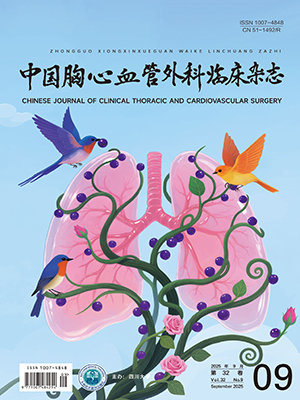| 1. |
樊子暄, 赵金红, 张羽欧, 等. 我国三级公立医院出院患者随访工作现状调查. 中国卫生质量管理, 2021, 28(11): 11-14..
|
| 2. |
Koç Ş. A possible follow-up method for diabetic heart failure patients. Int J Clin Pract, 2021, 75(11): e14794..
|
| 3. |
Zou B, Li X, Huang X, et al. Telephone follow-up design and practice for advanced cancer pain patients. J Cancer Educ, 2020, 35(4): 751-759..
|
| 4. |
Rochette C, Michallet AS, Malartre-Sapienza S, et al. Telephone follow-up of oncology patients: The contribution of the nurse specialist for a Service-Dominant Logic in hospital. BMC Health Serv Res, 2021, 21(1): 580..
|
| 5. |
郑希, 徐丹, 黄玥, 等. 胸腔镜肺叶切除术后肺癌患者电话随访失访原因分析及影响因素研究. 中国全科医学, 2019, 22(14): 1702-1706..
|
| 6. |
Dai W, Feng W, Zhang Y, et al. Patient-reported outcome-based symptom management versus usual care after lung cancer surgery: A multicenter randomized controlled trial. J Clin Oncol, 2022. 40(9): 988-996..
|
| 7. |
Yu H, Yu Q, Nie Y, et al. Data quality of longitudinally collected patient-reported outcomes after thoracic surgery: Comparison of paper- and web-based assessments. J Med Internet Res, 2021. 23(11): e28915..
|
| 8. |
祁子凡, 温馥源, 曹寒, 等. 大型人群队列研究随访监测设计研究进展. 中华流行病学杂志, 2022. 43(1): 134-138..
|
| 9. |
Shin S, Kong S, Kang D, et al. Longitudinal changes in pulmonary function and patient-reported outcomes after lung cancer surgery. Respir Res, 2022, 23(1): 224..
|
| 10. |
刘文贵. 临床病例的远期随访方法. 中国病案, 2011, 12(6): 5-7..
|
| 11. |
韩书环, 王辉. 电话随访出院患者在医院管理中的应用. 中国卫生标准管理, 2021, 12(14): 28-31..
|
| 12. |
U.S. Department of Health and Human Services FDA Center for Drug Evaluation and Research; U.S. Department of Health and Human Services FDA Center for Biologics Evaluation and Research; U.S. Department of Health and Human Services FDA Center for Devices and Radiological Health. Guidance for industry: Patient-reported outcome measures: Use in medical product development to support labeling claims: Draft guidance. Health Qual Life Outcomes. 2006, 4: 79..
|
| 13. |
Calvert M, Kyte D, Mercieca-Bebber R, et al. Guidelines for inclusion of patient-reported outcomes in clinical trial protocols: The SPIRIT-PRO extension. JAMA, 2018. 319(5): 483-494..
|
| 14. |
魏起友, 韩巴特尔, 郭占林. 非小细胞肺癌患者的术后随访研究. 内蒙古医科大学学报, 2015, (2): 97-101, 107..
|
| 15. |
郑小芳, 周逸清, 罗利英, 等. 肿瘤患者电话随访常见沟通问题分析与对策. 中国社区医师, 2022, 38(1): 141-143..
|
| 16. |
蓝西萍, 曾梅. 提高出院患者电话随访成功率的措施探讨. 内科, 2015, 10(6): 897-898..
|
| 17. |
Dai W, Dai Z, Wei X, et al. Early patient-reported outcomes after uniportal vs. multiportal thoracoscopic lobectomy. Ann Thorac Surg, 2022, 114(4): 1229-1237..
|
| 18. |
Wei X, Yu H, Dai W, et al. Discrepancy in the perception of symptoms among patients and healthcare providers after lung cancer surgery. Support Care Cancer, 2022. 30(2): 1169-1179..
|
| 19. |
Wei X, Yu H, Dai W, et al. Patient-reported outcomes of video-assisted thoracoscopic surgery versus thoracotomy for locally advanced lung cancer: A longitudinal cohort study. Ann Surg Oncol, 2021, 28(13): 8358-8371..
|
| 20. |
文伟, 何秀珍. 出院患者电话随访的实践与体会. 当代护士(下旬刊), 2014, 7: 182-183..
|
| 21. |
柯艳, 王忠庆. 个性化临床科研随访闭环管理. 中国医疗设备, 2016, 31(6): 152-153, 156..
|
| 22. |
王丹, 李俊英, 李琪, 等. 肿瘤患者共享信息随访平台及精准护理随访模式探索. 西南国防医药, 2021, 31(3): 236-239..
|
| 23. |
孙子科技木, 雷铖, 潘君, 等. 慢性病患者使用随访应用程序的情况及其影响因素. 广西医学, 2022, 44(1): 58-63..
|
| 24. |
张立生. 随访是临床科研的重要项目. 实用疼痛学杂志, 2019, 15(5): 321..
|
| 25. |
田华灵, 周敏, 徐伟春. 程序化随访在肺癌患者中的应用效果研究. 临床医学, 2021, 41(12): 74-76..
|
| 26. |
宋艳. 电话随访在慢病随访中的应用. 中国保健营养, 2021, 31(16): 271..
|
| 27. |
Oscalices MIL, Okuno MFP, Lopes M, et al. Discharge guidance and telephone follow-up in the therapeutic adherence of heart failure: Randomized clinical trial. Rev Lat Am Enfermagem, 2019, 27: e3159..
|




